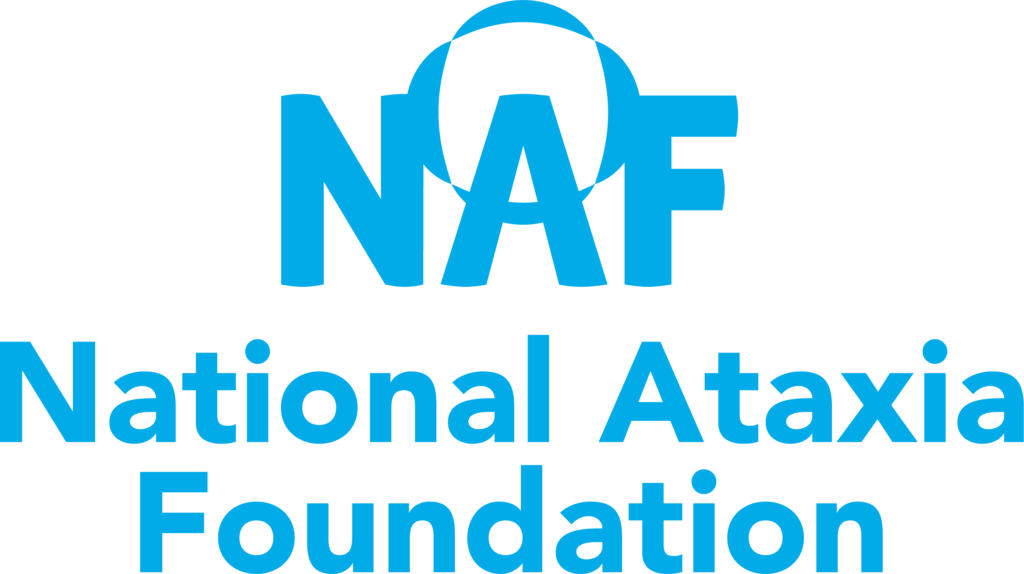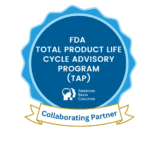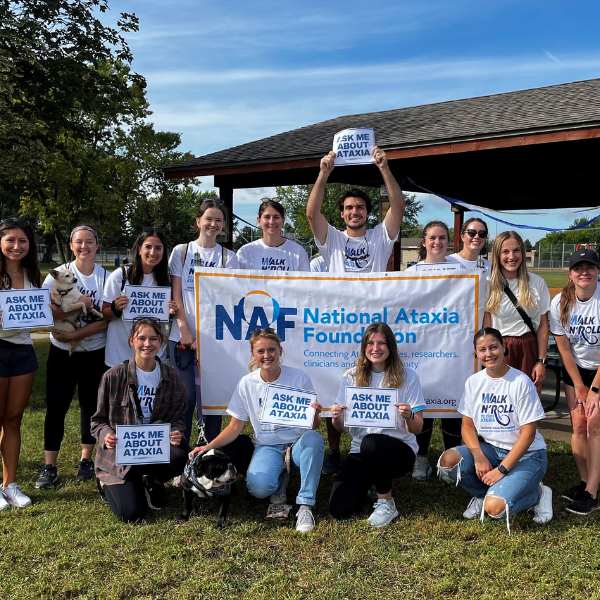
Written by Tala Ortiz
Edited by Dr. Larissa Nitschke
Repeat-associated non-AUG (RAN) translation in CAG repeat expansion diseases is toxic to cells and causes them to die. The Jain group found that RAN proteins and expanded RNA can be found in the same location in cells and interfere with essential cellular processes.
What is responsible for cell death in spinocerebellar ataxias caused by CAG repeat expansions? Answering this burning question can provide scientists with opportunities for therapeutics that help brain cells live longer.
CAG repeat expansions are found in many diseases, including spinocerebellar ataxias (SCA), Huntington’s disease (HD), and spinal and bulbar muscular atrophy. In these diseases, DNA has been mutated and CAG sequences are repeated more times than they should be. This mutated DNA is harmful to cells in multiple ways.
First, the DNA is transcribed into mutant RNA molecules, which can form clusters, called foci, in the nucleus of a cell and trap proteins that are responsible for RNA regulation. Second, the mutant RNA can be translated into a mutant protein that contains a polyglutamine stretch. This stretch of repeated glutamine amino acids can disrupt the folding and function of the protein. Third, the mutant RNAs can undergo a unique process called repeat-associated non-AUG (RAN) translation and produce toxic RAN proteins. Taken together, these molecules disrupt cellular function and overload cells, causing them to die.
What is repeat-associated non-AUG (RAN) translation?
RNA molecules provide the cell with a set of instructions to make a certain protein through a process called translation. In normal or “canonical” translation, molecules that make proteins scan RNA for a “go” signal called an AUG start codon. This signal is used to start the synthesis of the protein the RNA encodes. In RAN translation, this AUG “go” signal is not required. Instead, the repeats encourage translation molecules to make proteins from the mutant RNA. Since there is no AUG “go” signal, translation can start in unexpected places along the RNA and form three different mutant RAN proteins from each RNA strand. This means one CAG expansion in DNA produces two mutant RNAs (one from each DNA strand), which can produce up to six mutant RAN proteins.
Why are RAN proteins important in spinocerebellar ataxia?
In 2015, Bañez-Coronel and colleagues reported that RAN proteins are found in human HD autopsy brains near proteins associated with cell death and inflammation. These proteins are toxic in cells and are present in brain regions affected in HD. This is important for SCAs because, like HD, many SCAs are also caused by CAG repeat expansions and could have similar pathology.
It is crucial to investigate the role of mutant RNA and RAN proteins produced by CAG repeat expansions. That way, we can learn if and how these molecules function in disease. Das and colleagues began to tease out the contributions of repeat RNA and RAN proteins by looking at where both were located in the cell. This was done by expressing the repeat RNA and RAN proteins in cells.
To begin, the authors observed that the DNA sequences surrounding the CAG repeat expansion are vital for RAN translation. This means that the sequences that come before and after the repeat influence whether RAN proteins are made or not. They further found that mutant RNA formed clusters in both the nucleus and the cytoplasm. Not only that, but RAN proteins caused RNA to cluster just outside the nucleus of the cell. After discovering these RNA-RAN protein clusters, or aggregates, the Das and colleagues group answered two main questions:
- Do RNA-RAN aggregates trap proteins involved in RNA regulation?
- Do RNA-RAN aggregates interfere with transport between the nucleus and the rest of the cell?
The researchers found that proteins associated with protein aggregation and neurodegenerative disease cluster with RNA-RAN aggregates. These proteins—p62, TDP-43, and FUS—aggregate or are not in the right place in multiple neurodegenerative diseases. This pathology is correlated with disease, and seeing their interaction with RNA-RAN aggregates shows that they might be harmful to the cell and could cause the cell to die.
Another method of disrupting cell function is by interfering with transport. The nucleus in a cell is constantly sending and receiving cargo. The doors used to shuttle the cargo are called nuclear pores. Nuclear pores surround the nucleus and are essential for proper cell functioning. Since RNA-RAN aggregates gather around the nucleus, it is imperative to consider the impact on nuclear-cytoplasmic transport.
To investigate this question, the authors looked at a protein called RanGTP1, which is involved in nuclear transport. They found that this protein was not in the place it was supposed to be around the nucleus. The authors further observed the flow of molecules in and out of the nucleus and saw that a lot of molecules that should be entering the nucleus were not able to enter. Interruption of transport in and out of the nucleus is extremely harmful to the cell and could lead to cell stress and increased levels of cell death.
RNA-RAN protein aggregates are harmful to cells and trap RNA regulator proteins as well as disturb transport of nuclear-cytoplasmic contents. The next question the authors asked was, what molecule is driving toxicity in these cells? Is it mostly the repeated RNA, or is it mostly the RAN proteins? In pursuit of this answer, the Das and colleagues designed molecules that bind to the mutant RNA and prevent RAN translation. This caused a significant decrease in RAN protein levels and cytoplasmic RNA clusters. Preventing RAN translation allowed TDP-43 to be localized to its proper place in the cell and reduced cell death. These results show that RAN proteins play an important role in cell toxicity and that preventing the translation of RAN proteins helps the cells function better.
RAN translation in the field of spinocerebellar ataxia is still relatively new. Historically in CAG repeat expansion diseases, the focus has been on the impact of polyglutamine-expanded proteins and how their functions change with the repeat expansion. Researchers are actively working to uncover the role of RAN proteins in CAG-expanded SCAs. These toxic proteins provide ideal therapeutic targets that, when cleared, could mitigate disease in many SCAs someday.
Key Words
Translation: A process by which proteins are made using RNA molecules as templates
Nuclear Transport: Mechanisms used to move molecules across the nuclear membrane
RAN Translation: An unconventional form of translation that does not require a typical AUG start signal. Learn more about RAN Translation here.
Conflict of Interest Statement
The author and editor have no conflicts of interest to declare.
Citation of Article Reviewed
Das, M. R., Chang, Y., Anderson, R., Saunders, R. A., Zhang, N., Tomberlin, C. P., … & Jain, A. (2023). Repeat-associated non-AUG translation induces cytoplasmic aggregation of CAG repeat-containing RNAs. Proceedings of the National Academy of Sciences, 120(3), e2215071120. https://doi.org/10.1073/pnas.2215071120
Read Other SCAsource Summary Articles

SCAview: Grandes datos para grandes preguntas
Escrito por Dr. Celeste Suart Editado por Priscila Pereira Sena Traducido por Ismael Araujo Aliaga Un grupo internacional de investigadores desarrolló una novedosa herramienta para visualizar grandes bases de datos de información Read More…

Alternative splicing: Potential disease mechanism for SCA1
Written by Christina PengEdited by Larissa Nitschke, PhD Ever since the CAG expansion of the Ataxin-1 (ATXN1) gene has been identified as the cause of spinocerebellar ataxia type 1 (SCA1), Read More…

Spotlight on Glia in Spinocerebellar Ataxia Type 1
Written by Marija Cvetanovic, PhDEdited by Spyros Petrakis, PhD Researchers from Yale provide evidence that glial cells, in particular Bergmann glia in the cerebellum, may contribute to disease pathogenesis in Read More…










